Excerpts from Jim Conrad's
Naturalist Newsletter
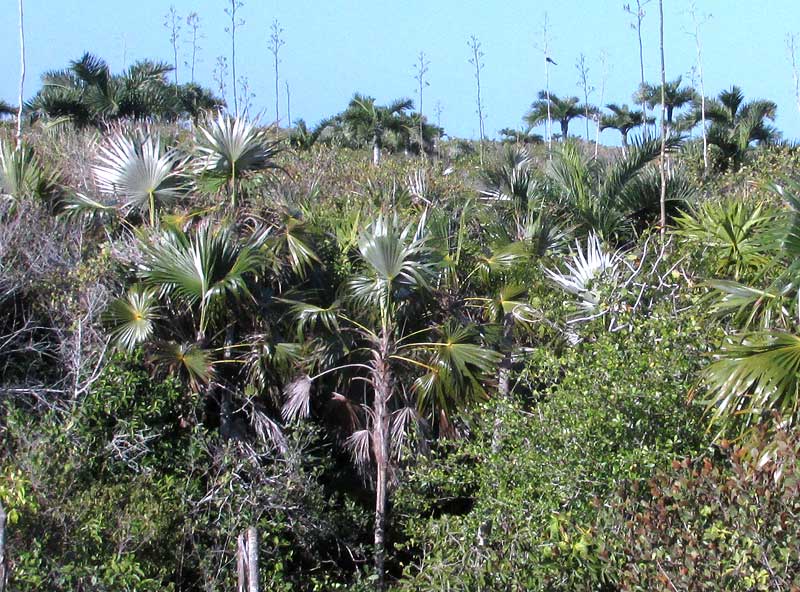
from the February 8, 2015 Newsletter issued from Río Lagartos, on the Yucatan Peninsula's northern coast (~N21.60°, ~W88.16°), Yucatán state, MÉXICO
MEXICAN SILVER PALM
When rare and endangered species occurring in Ría Lagartos Biosphere Reserve are listed, the Mexican Silver Palm, COCCOTHRINAX READII, always makes the list. It's endemic to the Yucatan Peninsula and in our area occurs only in small populations just behind the dunes along the shore, where salty, hot winds and sandy soil keep the vegetation low and scrubby. I've been looking for the species ever since I got here, and this week I finally found it. Above, the small fan-palm with silvery-bottomed fronds is shown in its habitat.
In that picture the taller, darker palms in the background are the Buccaneer Palms we profiled last week. The scrubby plants forming an almost impenetrable thicket around the silver palms are mostly Poisonwood trees (Metopium brownei), Baybean vines (Canavalia rosea), and Seaside Oxeye shrubs (Borrichia arborescens). The spear-like items pointing at the sky are old fruiting heads of Caribbean Agave, Agave angustifolia. A silver palm shown closer up is seen below:
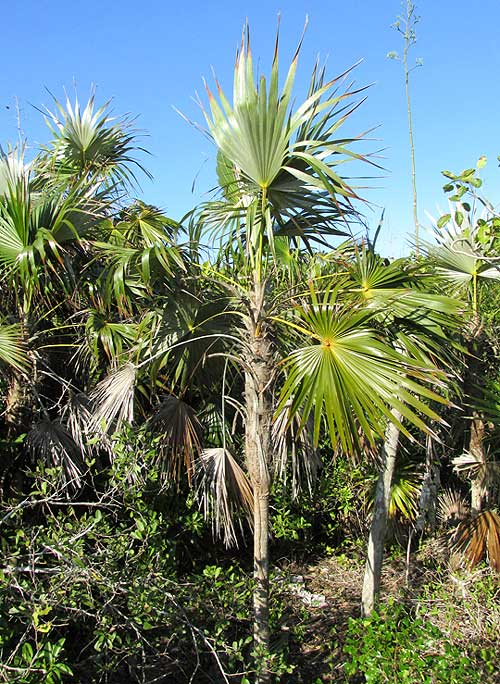
Besides for their rarity, one reason it was hard to find them was that Mexican Silver Palms are very similar to the abundant and extremely variable-looking Thatch Palm, or Chit, Thrinax radiata. You can see the Thatch Palm at www.backyardnature.net/yucatan/chitpalm.htm.
For help in distinguishing the two species I went onto the very active online forum of the International Palm Society at http://www.palmtalk.org/forum/. There Aztropic in Arizona told me that petiole bases of Thatch Palm fronds split, while Mexican Silver Palm petiole bases don't. Aztropic was right, and below you can see a non-splitting silver palm petiole base
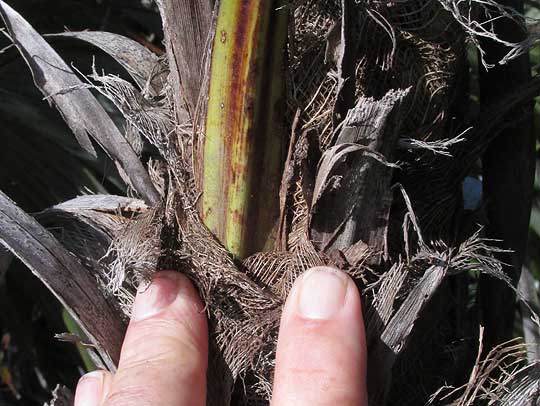
It wasn't the non-splitting petiole bases, however, that enabled me to spot our tiny island of Mexican Silver Palms in an ocean of scrub and Thatch Palms. Rather it was the silver palm's silvery frond undersurfaces, shown below:
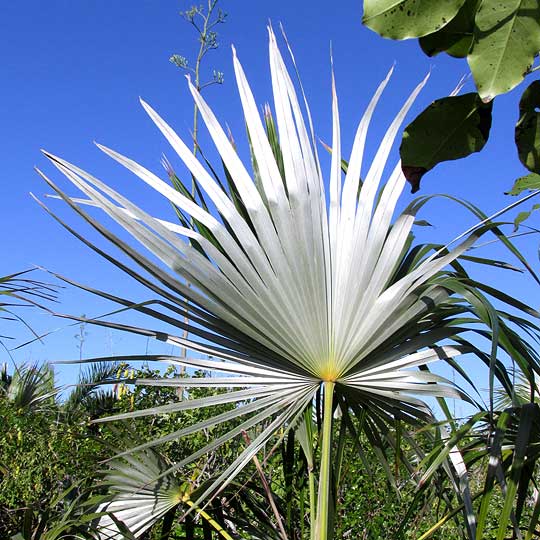
That picture was taken with the low morning sun at my back. Normally the silveriness isn't as conspicuous.
Then there was the matter of the "hastula," which is a triangular, toothlike appendage on the upper surface of some fan palms fronds, where the blade attaches to the petiole. The literature says that the Thatch Palm's hastula is triangular but the Mexican Silver Palm's can be triangular, notched at the tip, or have two distinct tips. On each of our trees hastulas can be found in different configurations, including the one shown below:

One of our trees was loaded with over-mature fruits, shown below:
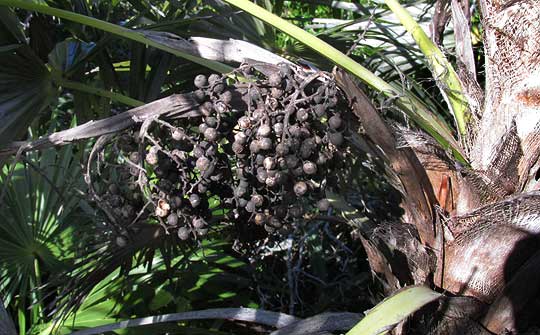
Finding this rare palm has been one of the highlights of my stay at Río Lagartos, and receiving the enthusiastic help of folks at the PalmTalk.Org Forum just made the experience sweeter.